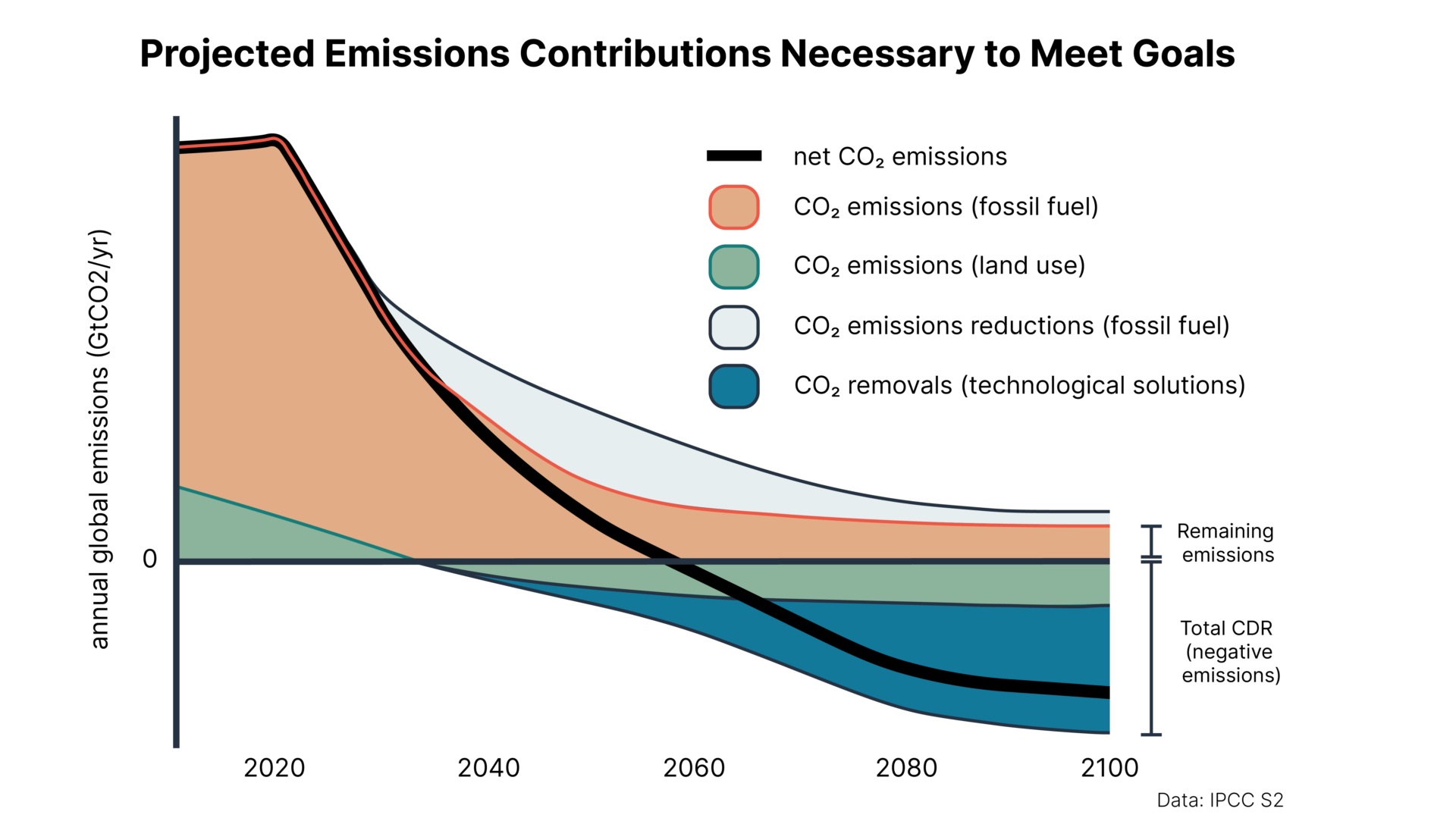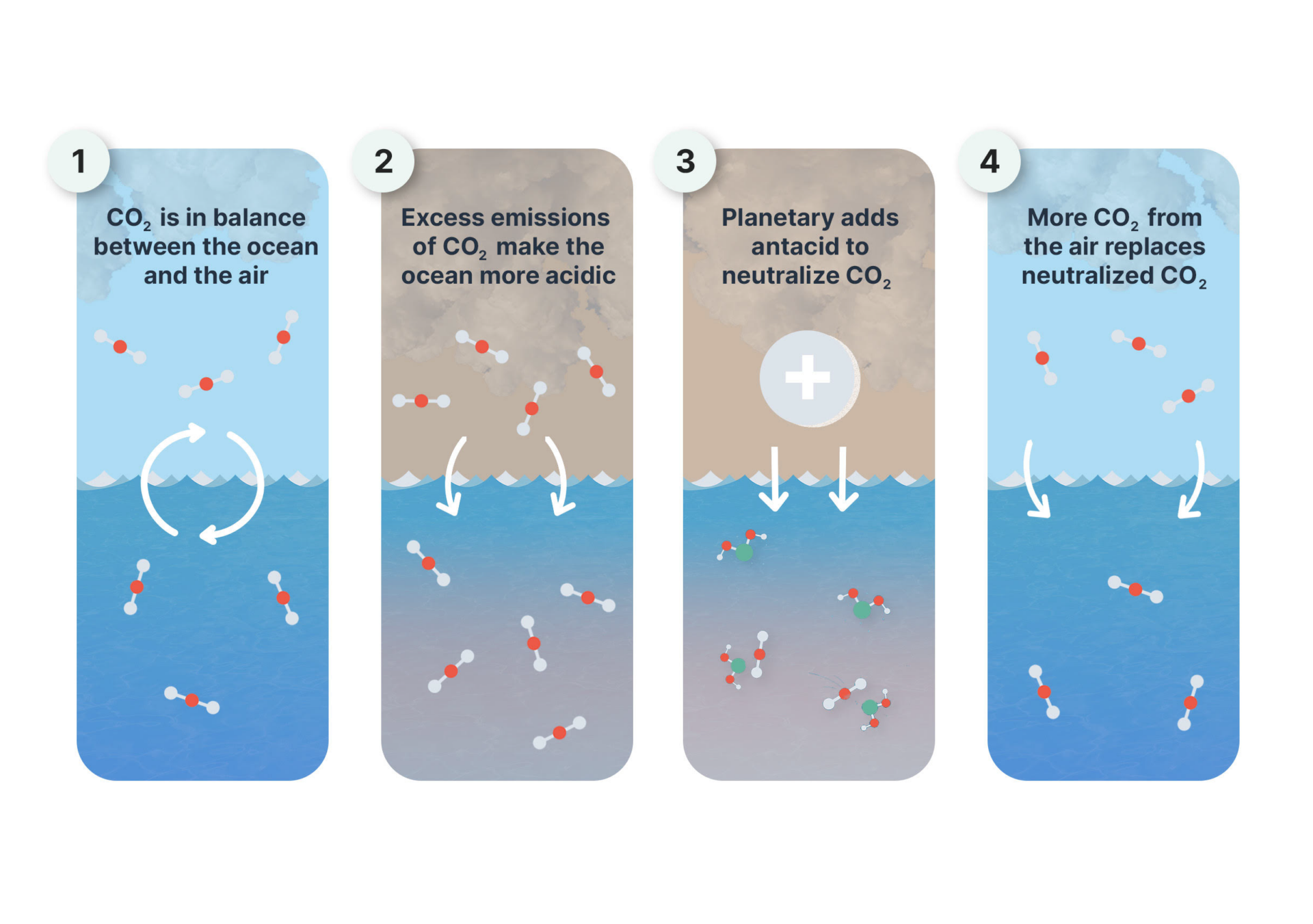
The Need for Carbon Dioxide Removal (CDR)
To address the climate crisis at a meaningful scale, the world must reduce its emissions levels quickly. This is a priority and a necessity. However, we have already waited too long and emitted too much for reducing emissions alone to be a viable path forward.
Carbon Dioxide Removal (and, more broadly, Greenhouse Gas Removal) allows us to counteract the emissions we cannot yet eliminate, accelerating our efforts to reach net-zero emissions.
Achieving net-zero emissions globally is only the first step. It does not address the harm already done.
It would take hundreds of thousands of years for the planet to return itself to pre-industrial levels of carbon dioxide, even without new emissions being released.
To avert continuing warming due to existing emissions, we must achieve net-negative emissions, removing more carbon from the atmosphere than we release. Only by actively capturing carbon can we begin to reverse the damage that we have already done to the planet.
As emission reduction efforts have failed to accelerate, it has become increasingly clear that significant CDR efforts are necessary. In the latest models produced by the Intergovernmental Panel on Climate Change, all global scenarios that successfully limit warming to 1.5° or 2° Celsius above pre-industrial levels involve significant implementations of CDR projects. What is not yet clear is what forms CDR should take.
Today’s CDR Strategies
There are many CDR strategies in use or in development today, including reforestation, habitat restoration, direct air capture, soil carbon sequestration, improved land management, and Ocean Alkalinity Enhancement (OAE).
Each of these strategies has benefits, and each has drawbacks. To meet our climate goals, we must approach carbon removal holistically, relying on a portfolio of solutions globally that can complement each other’s shortcomings and amplify each other’s strengths.
Planetary welcomes and encourages the safe and responsible development of all viable CDR methods. Whether the process is biological or geological, established or emerging, if the method is safe, effective, and appropriate, we hope to see it fully explored.
We work in the OAE field, and we believe, like many ocean scientists, that responsible marine CDR is a necessary component of a global climate management strategy. However, our hope is to be only one part of the global solution to combating climate change.
More information on other Carbon Dioxide Removal strategies is available on our Additional Resources Page.

Ocean Alkalinity Enhancement (OAE)
Ocean Alkalinity Enhancement (OAE) uses the exact same process as the natural geologic carbon cycle to remove carbon from the atmosphere by neutralising acidic CO2 with alkaline rocks. In this sense, nature is doing all the work. The difference is whether we wait many thousands of years for rainfall and weathering to bring carbon to the ocean for storage or if we bring the mineral to the sea ourselves to help speed up the process.
The carbon stored in the ocean by OAE projects will remain there, in a stable form, for millennia – up to 100,000 years.
This stored carbon is not vulnerable to forest fires, pests, or political disturbances. Once the carbon is safely sequestered, it does not need to be monitored or maintained.
Some estimates suggest that ocean alkalinization has the potential to become the largest and most effective category of carbon removal available.

